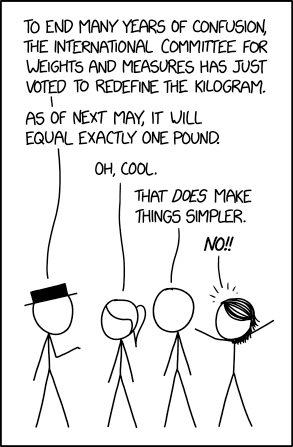Ok.
With this post, I think it’s time to ask the mods to lock the thread... [emoji6]
The register decided long ago, these SI and imperial units were all to messy, so they invented their own:
Area (nanoWales - nW)
Force (Norris - No)
Length (linguine - lg)
Temperature (Hilton - Hn)
Volume (grapefruit - gf)
Weight - (Jub - Jb)
Velocity - (Percentage of maximum velocity of sheep in a vacuum)
Money - (Pogba - Pg)
Etc...
——————————
From the register(biting the hand that feeds IT): (follow the link, there’s a conversion calculator)
 https://www.theregister.co.uk/Design/page/reg-standards-converter.html
https://www.theregister.co.uk/Design/page/reg-standards-converter.html
The Reg online standards converter
Welcome to the Reg online standards converter, which allows instant conversion of commonly-used metric and imperial standards into approved Vulture Central units, and vice-versa. To get started, simply make your selection from the list below and you'll be offered three sets of fields: Imperial, Metric and Reg. Enter the desired figure into any one field, hit calculate and you're in business.
Not all conversions will work perfectly. This is because here at the Reg Standards Bureau, our priority has to be preserving the accuracy of our own units. Accordingly, all our conversion factors are Reg standards.
To maintain our own high standards, we've had to shave a teensy bit of accuracy off everyone else's. For instance: there are 8 furlongs to a mile, which means 25 miles should convert to 200 furlongs. But it actually converts to 199.something furlongs. As our technical wizard explains: "To turn a mile into anything else, it first needs to be converted into linguine".
——————————
So using standard REG notation:
My 0.0031 double decker bus diameter MD flew using a motor with 1.6 (Chuck) Norris’ of impulse to an altitude of 65 Brontosauruses, reaching a maximum velocity of 0.0184% of the maximum velocity of a sheep in a vacuum.
And my JLCR is typically set to open at 1306 linguines.







